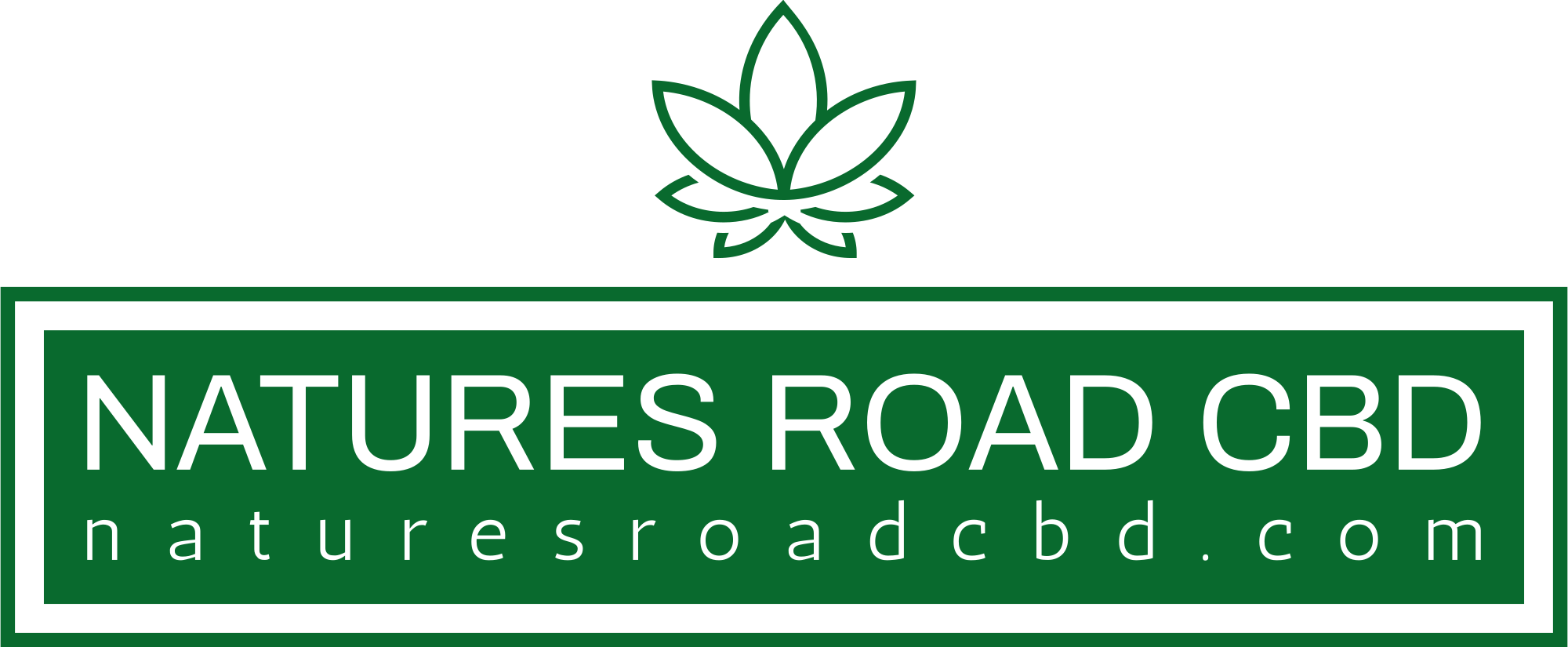Market Size and Growth
Understanding the aesthetic medicine market’s size and growth trajectory is crucial for investors seeking opportunities in this dynamic sector. A comprehensive analysis reveals significant market expansion driven by factors such as increasing disposable incomes, evolving societal beauty standards, and technological advancements.
Global Market Value
The global aesthetic medicine market has witnessed substantial growth in recent years, fueled by a confluence of factors. Increasing disposable incomes, particularly in emerging markets, have empowered consumers to invest in enhancing their appearance. Furthermore, evolving societal beauty standards and the rise of social media have fueled a growing desire for aesthetic treatments.
Technological advancements in minimally invasive procedures, coupled with improved safety profiles and shorter recovery times, have also contributed to market expansion.
The increasing demand for non-surgical treatments, such as Botox, fillers, and laser therapies, has been a significant driver of growth.
Regional Market Analysis
Understanding the aesthetic medicine market’s size and growth trajectory is crucial for investors seeking opportunities in this dynamic sector. A comprehensive analysis reveals significant market expansion driven by factors such as increasing disposable incomes, evolving societal beauty standards, and technological advancements.
The global aesthetic medicine market has witnessed substantial growth in recent years, fueled by a confluence of factors. Increasing disposable incomes, particularly in emerging markets, have empowered consumers to invest in enhancing their appearance. Furthermore, evolving societal beauty standards and the rise of social media have fueled a growing desire for aesthetic treatments.
Technological advancements in minimally invasive procedures, coupled with improved safety profiles and shorter recovery times, have also contributed to market expansion.
The increasing demand for non-surgical treatments, such as Botox, fillers, and laser therapies, has been a significant driver of growth.
Regional Market Analysis:
- North America currently dominates the global aesthetic medicine market, driven by high levels of consumer spending and a strong adoption rate of innovative technologies.
- Europe is another key market, with significant growth anticipated in countries such as Germany, France, and the United Kingdom.
- Asia-Pacific is emerging as a rapidly expanding market, fueled by rising disposable incomes and increasing awareness of aesthetic procedures in countries like China, India, and South Korea.
Market Segmentation by Treatment
Market Segmentation by Treatment:
The aesthetic medicine market is segmented by treatment type, with several key categories experiencing significant growth.
- Botox and Dermal Fillers: These minimally invasive procedures remain the most popular aesthetic treatments, addressing wrinkles, facial lines, and volume loss.
- Laser Therapies: A wide range of laser treatments target various skin concerns, including pigmentation, acne scars, hair removal, and skin rejuvenation.
- Body Contouring: Procedures such as liposuction, CoolSculpting, and radiofrequency therapies are gaining popularity for fat reduction and body reshaping.
- Skincare Treatments: Chemical peels, microdermabrasion, and facials continue to be sought-after treatments for skin rejuvenation and improvement.
Key Drivers and Trends
The global aesthetic medicine market is experiencing robust expansion, fueled by a convergence of key drivers. Rising disposable incomes, particularly in emerging markets, are enabling consumers to prioritize personal appearance enhancement. Shifting societal beauty standards, amplified by the pervasive influence of social media, have further intensified the demand for aesthetic treatments.
Rising Disposable Incomes
Increasing disposable incomes, especially in developing economies, are empowering individuals to allocate more funds towards enhancing their appearance. This trend is particularly pronounced in regions where economic growth has led to a rise in middle-class populations.
The evolution of societal beauty standards, heavily influenced by media portrayals and social media trends, has contributed significantly to the aesthetic medicine market’s expansion. The pursuit of an idealized look, often unattainable without medical intervention, drives individuals to seek aesthetic treatments.
Increasing Awareness and Acceptance of Aesthetic Procedures
Technological advancements have played a pivotal role in shaping the aesthetic medicine landscape. Minimally invasive procedures, characterized by shorter recovery times and reduced risk compared to traditional surgery, have gained widespread acceptance. This shift towards less disruptive treatments has significantly broadened the appeal of aesthetic interventions.
The increasing accessibility and affordability of aesthetic treatments have also contributed to market growth. As technology progresses, costs tend to decline, making these procedures more attainable for a broader range of consumers.
Technological Advancements
Increasing disposable incomes, particularly in emerging markets, have empowered consumers to invest in enhancing their appearance.
Evolving societal beauty standards and the rise of social media have fueled a growing desire for aesthetic treatments.
Technological advancements in minimally invasive procedures, coupled with improved safety profiles and shorter recovery times, have also contributed to market expansion.
The increasing demand for non-surgical treatments, such as Botox, fillers, and laser therapies, has been a significant driver of growth.
Growing Influence of Social Media
Rising disposable incomes, particularly in emerging economies, are empowering individuals to allocate more funds towards enhancing their appearance. This trend is particularly pronounced in regions where economic growth has led to a rise in middle-class populations.
The evolution of societal beauty standards, heavily influenced by media portrayals and social media trends, has contributed significantly to the aesthetic medicine market’s expansion. The pursuit of an idealized look, often unattainable without medical intervention, drives individuals to seek aesthetic treatments.
Technological advancements have played a pivotal role in shaping the aesthetic medicine landscape. Minimally invasive procedures, characterized by shorter recovery times and reduced risk compared to traditional surgery, have gained widespread acceptance. This shift towards less disruptive treatments has significantly broadened the appeal of aesthetic interventions.
The increasing accessibility and affordability of aesthetic treatments have also contributed to market growth. As technology progresses, costs tend to decline, making these procedures more attainable for a broader range of consumers.

Investment Opportunities
The global aesthetic medicine market is experiencing robust expansion, fueled by a convergence of key drivers.
Acquisition of Existing Clinics
Acquisition of existing clinics presents a compelling investment opportunity within the rapidly growing aesthetic medicine market.
Existing clinics often come equipped with established infrastructure, patient bases, and trained staff, providing a solid foundation for investors to capitalize on market trends.
By acquiring an existing clinic, investors can streamline their entry into the sector, avoiding the time and resources required to build a practice from scratch.
A thorough due diligence process is crucial when considering the acquisition of an aesthetic medicine clinic.
Investors should carefully analyze financial records, assess the clinic’s reputation and patient satisfaction, and evaluate the qualifications and experience of its staff.
Identifying clinics with a strong track record, positive patient reviews, and a skilled team can significantly enhance the investment’s potential for success.
Development of New Treatments and Technologies
Investment Opportunities in Aesthetic Medicine:
The global aesthetic medicine market is experiencing robust expansion, fueled by a convergence of key drivers. Rising disposable incomes, especially in emerging economies, are empowering individuals to allocate more funds towards enhancing their appearance. This trend is particularly pronounced in regions where economic growth has led to a rise in middle-class populations.
The evolution of societal beauty standards, heavily influenced by media portrayals and social media trends, has contributed significantly to the aesthetic medicine market’s expansion. The pursuit of an idealized look, often unattainable without medical intervention, drives individuals to seek aesthetic treatments.
Technological advancements have played a pivotal role in shaping the aesthetic medicine landscape. Minimally invasive procedures, characterized by shorter recovery times and reduced risk compared to traditional surgery, have gained widespread acceptance. This shift towards less disruptive treatments has significantly broadened the appeal of aesthetic interventions.
The increasing accessibility and affordability of aesthetic treatments have also contributed to market growth. As technology progresses, costs tend to decline, making these procedures more attainable for a broader range of consumers.
Acquisition of existing clinics presents a compelling investment opportunity within the rapidly growing aesthetic medicine market.
Existing clinics often come equipped with established infrastructure, patient bases, and trained staff, providing a solid foundation for investors to capitalize on market trends.
By acquiring an existing clinic, investors can streamline their entry into the sector, avoiding the time and resources required to build a practice from scratch.
A thorough due diligence process is crucial when considering the acquisition of an aesthetic medicine clinic.
Investors should carefully analyze financial records, assess the clinic’s reputation and patient satisfaction, and evaluate the qualifications and experience of its staff.
Identifying clinics with a strong track record, positive patient reviews, and a skilled team can significantly enhance the investment’s potential for success.
Expansion into Emerging Markets

Investment opportunities in aesthetic medicine abound as the global market continues to expand. This growth is fueled by several key factors including rising disposable incomes, evolving beauty standards, and advancements in technology.
A primary avenue for investment is through acquisition of existing clinics. Established clinics offer a ready-made infrastructure, patient base, and experienced staff, providing a faster route to market penetration than building a practice from scratch. Due diligence is paramount in this process, ensuring financial viability, strong reputation, and a qualified team are in place.
Another opportunity lies in supporting innovative technologies within the aesthetic medicine space. This can involve investing in companies developing new treatments, devices, or software solutions that enhance patient care or streamline clinic operations.
Emerging markets present particularly attractive prospects. As disposable incomes rise and awareness of aesthetic procedures grows, these regions offer substantial growth potential for investors willing to navigate the unique challenges they present.
Finally, strategic partnerships between established players and emerging companies can foster innovation and market expansion. Combining resources and expertise can create synergistic opportunities within this dynamic sector.
Partnerships with Medical Professionals
Investment opportunities abound in the aesthetic medicine market, fueled by increasing disposable incomes, evolving beauty standards, and technological advancements.
One attractive avenue is acquiring existing clinics. This offers a head start with established infrastructure, patient base, and staff, allowing investors to capitalize on market trends more quickly.
Partnerships with medical professionals are crucial for success in this field. These collaborations can take various forms:
- Investment in Individual Practices: Provide capital to expand existing clinics or introduce new technologies and treatments.
- Joint Ventures: Combine resources and expertise with experienced practitioners to launch innovative services or target specific patient demographics.
- Strategic Partnerships: Collaborate on research and development, marketing initiatives, or training programs to leverage each other’s strengths.
When seeking these partnerships, investors should prioritize experience, reputation, and alignment with their investment goals. A strong understanding of the medical landscape and patient needs is essential for building mutually beneficial relationships.
Challenges and Risks
While the aesthetic medicine market presents significant growth opportunities, it’s crucial to acknowledge the inherent challenges and risks. These include regulatory hurdles, technological advancements that can quickly render existing equipment obsolete, and evolving consumer preferences.
Competition within the sector is fierce, with both established players and emerging disruptors vying for market share. Maintaining a competitive edge requires continuous innovation, strategic marketing, and exceptional patient care.
The ethical considerations surrounding aesthetic medicine are paramount. Issues such as unrealistic beauty standards promoted through advertising, potential for overtreatment, and the psychological impact of procedures necessitate a commitment to responsible practices and patient well-being.
Regulatory Scrutiny
Despite its robust growth trajectory, the aesthetic medicine market is not without its challenges and risks. Regulatory scrutiny is a significant factor, as governments worldwide grapple with ensuring patient safety and ethical standards in this rapidly evolving sector.
Stringent licensing requirements, clinical trial regulations, and ongoing monitoring of procedures can create complexities for both established players and new entrants.
The rapid pace of technological innovation also presents a double-edged sword. While advancements lead to improved treatments and patient outcomes, they can also render existing equipment obsolete quickly, demanding significant investment in staying current.
Patient Safety Concerns
The aesthetic medicine market is booming, but investors need to be aware of potential challenges and risks. One major concern is patient safety. Ensuring safe and effective procedures requires rigorous training for practitioners, adherence to strict sterilization protocols, and ongoing monitoring of emerging complications or side effects.
Another risk stems from the competitive nature of the industry. New technologies and treatment options emerge constantly, creating pressure to stay ahead of the curve. This can lead to over-treatment as practitioners try to keep up with the latest trends, potentially putting patients at risk for unnecessary procedures or complications.
Furthermore, the ethical implications of aesthetic medicine are increasingly being scrutinized. The industry’s promotion of unrealistic beauty standards and the potential for psychological harm from procedures raise concerns about patient well-being. Addressing these ethical challenges requires a commitment to transparency, informed consent, and responsible marketing practices.
Competition from Low-Cost Providers

Competition from low-cost providers poses a significant challenge to established players in the aesthetic medicine market.
These competitors often offer procedures at lower prices, attracting price-sensitive consumers. This can put pressure on margins and profitability for higher-end clinics that rely on premium pricing and specialized services. To combat this, established providers need to differentiate themselves by offering superior technology, personalized care, experienced practitioners, and a focus on safety and long-term results.
Building a strong brand reputation and fostering patient loyalty through exceptional service can also help mitigate the impact of low-cost competition.
Ethical Considerations
Challenges and Risks:
- Regulatory Hurdles: Stringent licensing requirements, clinical trial regulations, and ongoing monitoring of procedures create complexities for both established players and new entrants.
- Technological Disruption: The rapid pace of innovation can render existing equipment obsolete quickly, demanding significant investment in staying current.
- Competition: Both established players and emerging disruptors vie for market share, requiring continuous innovation, strategic marketing, and exceptional patient care to maintain a competitive edge. Low-cost providers also pose a threat, particularly in price-sensitive segments.
- Patient Safety: Ensuring safe and effective procedures is paramount, requiring rigorous training for practitioners, adherence to strict sterilization protocols, and ongoing monitoring of emerging complications or side effects.
- Ethical Considerations: Issues surrounding unrealistic beauty standards, potential for overtreatment, and the psychological impact of procedures necessitate a commitment to responsible practices and patient well-being.
Future Outlook
The future outlook for the aesthetic medicine market is bright, fueled by rising consumer demand and technological advancements. However, navigating this dynamic landscape requires a keen understanding of both opportunities and challenges. Key areas of focus include expanding into emerging markets with growing disposable incomes, investing in innovative technologies that enhance patient care, and prioritizing ethical considerations to maintain public trust.
Projected Growth Rates
The global aesthetic medicine market is projected to experience robust growth in the coming years. This expansion will be driven by several factors, including rising disposable incomes, particularly in emerging economies, increasing awareness of aesthetic procedures, and advancements in minimally invasive technologies. The market is expected to witness a significant increase in demand for non-surgical treatments like Botox, fillers, lasers, and body contouring.
Specific regional projections indicate continued dominance by North America due to its high consumer spending and early adoption of innovative technologies. Europe is anticipated to see strong growth, with particular emphasis on Germany, France, and the United Kingdom. The Asia-Pacific region presents a particularly promising opportunity, fueled by rising disposable incomes and growing interest in aesthetic enhancements in countries like China, India, and South Korea.
While the market outlook is positive, investors should remain aware of potential challenges such as regulatory scrutiny, technological advancements requiring constant adaptation, and ethical considerations surrounding patient safety and unrealistic beauty standards. Strategic investments in innovative technologies, partnerships with experienced practitioners, and a focus on responsible practices will be crucial for success in this dynamic and evolving sector.
Emerging Trends and Innovations
The aesthetic medicine market is poised for significant growth, driven by rising disposable incomes, shifting beauty standards, and technological advancements.
Emerging trends include:
* **Personalized Treatments:** A move away from one-size-fits-all approaches, with treatments tailored to individual needs and genetic profiles.
* **Minimally Invasive Procedures:** Continued popularity of procedures with shorter recovery times and reduced risks compared to traditional surgery. This includes advancements in areas like injectables, lasers, and radiofrequency technologies.
* **Technological Integration:** Increased use of artificial intelligence, virtual reality, and telemedicine to enhance patient consultations, treatment planning, and post-treatment care.
* **Focus on Wellness:** Aesthetic treatments increasingly being viewed as part of a holistic wellness approach, encompassing not just appearance but also skin health, body contouring, and overall well-being.
* **Expansion into Emerging Markets:** Rapid growth in developing economies where rising middle classes are seeking aesthetic enhancements.
These trends present exciting investment opportunities for those who can identify innovative companies, technologies, and partnerships within this dynamic sector.
Impact of Technology on the Industry
The future of the aesthetic medicine market is bright, fueled by a confluence of factors including increasing disposable incomes, evolving beauty standards, and rapid technological advancements. As technology continues to progress, we can expect to see even more sophisticated and minimally invasive procedures emerge, further broadening the appeal of aesthetic enhancements.
A key trend is the personalization of treatments. Genetic testing and data-driven approaches will allow for more customized solutions tailored to individual needs and skin types, moving away from the “one-size-fits-all” approach.
Moreover, the integration of artificial intelligence and virtual reality will transform the patient experience. AI-powered tools can assist in treatment planning, provide personalized recommendations, and even enhance surgical precision. Virtual reality simulations can allow patients to visualize their desired outcomes before undergoing any procedure.
The aesthetic medicine market is also expected to see increased focus on overall wellness rather than just aesthetics. Procedures that promote skin health, improve body composition, and enhance mental well-being will gain traction as consumers seek holistic solutions for self-improvement.
In conclusion, the aesthetic medicine market presents a compelling investment opportunity with significant growth potential. However, navigating this dynamic landscape requires staying informed about emerging trends, understanding regulatory challenges, and prioritizing ethical considerations to ensure patient safety and long-term success.
Spa and beauty treatments
Azmia Magane
Brainstorm the Book
- Why Are My Lips So Dry After Lip Filler - November 12, 2025
- What Is THC Soda? A Beginner’s Guide To Cannabis-Infused Drinks - November 9, 2025
- Weed Soft Drinks You Can Sip Anywhere - November 7, 2025
